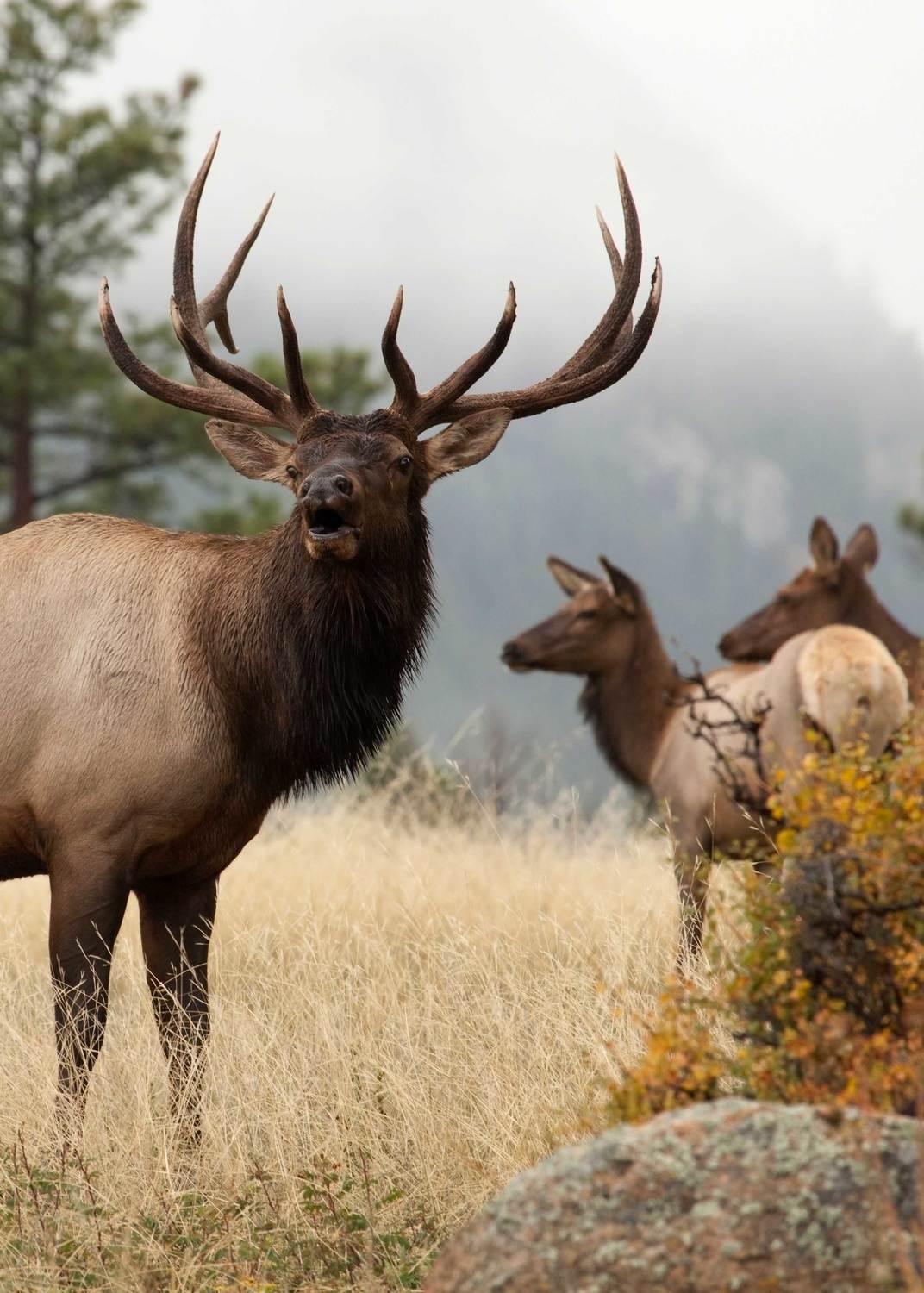
Elk hunting season falls primarily September through November, to coincide with the elk’s breeding season, known as the rut. This is when elk are more active and vocal, making them easier to locate and hunt. However, it’s essential to check with the specific wildlife agency responsible for the area where you plan to hunt for the most up-to-date and accurate information on elk hunting season dates, regulations, and permit requirements. Elk hunting season is typically regulated by state wildlife agencies. These agencies set specific dates for elk hunting seasons based on factors such as population management, conservation goals, and wildlife habitat conditions. Hunting regulations may change from year to year, so always verify the current season dates and any additional requirements before planning your elk hunting trip.
Elk hunting is popular in several states, each known for its unique hunting experiences and abundant elk populations. The top three most popular states for elk hunting include:
Colorado
Colorado is often considered one of the top destinations for elk hunting. It has a substantial elk population and offers a variety of hunting units, from high mountain terrain to lower-elevation foothills and plains. The state’s elk hunting seasons are diverse and typically run from September through November. Colorado typically offers several elk hunting seasons, including archery, muzzleloader, and rifle seasons. Archery seasons often start in early September, muzzleloader seasons in late September, and rifle seasons in October and November. Specific dates and hunting units can vary, so it’s crucial to check the Colorado Parks and Wildlife (CPW) website for the most up-to-date information.
Colorado uses a draw system for elk licenses and tags. Hunters must apply for limited licenses during a specific application period. Some over-the-counter (OTC) licenses may also be available for certain units and seasons. The CPW website provides details on the application process and license availability. Colorado is divided into numerous hunting units, each with its own elk population and regulations. Some units are known for their high elk densities, while others offer more challenging hunts in wilderness areas. Colorado offers diverse elk hunting opportunities, from the high alpine regions of the Rocky Mountains to lower-elevation foothills and plains. Hunters may need to adapt to varying terrain and weather conditions.
Wyoming
Wyoming is known for its vast expanses of public land and a significant elk population. The state offers both resident and non-resident hunters opportunities to hunt elk, and it provides various hunting units and seasons. Wyoming also provides a variety of elk hunting seasons, including archery, rifle, and muzzleloader seasons. These seasons typically run from September through November. Specific dates and hunting areas can vary, so it’s essential to refer to the Wyoming Game and Fish Department’s website for the latest information.
Wyoming utilizes a preference point system for elk hunting licenses. Hunters can accumulate preference points over time to increase their chances of drawing a license for a specific hunt area. Additionally, some general licenses and leftover tags may be available. Wyoming offers a range of elk hunting areas, including wilderness regions, national forests, and private lands. Depending on the area, hunters may encounter different levels of hunting pressure and access restrictions. Wyoming’s elk habitat varies from mountainous terrain to sagebrush flats and prairies. It’s essential to be prepared for different types of terrain and weather conditions.
Montana
Montana boasts a healthy elk population, and elk hunting is a popular activity among both residents and non-residents. The state offers archery, rifle, and muzzleloader seasons, providing hunters with plenty of opportunities. Montana is home to both Rocky Mountain elk and Roosevelt elk Rocky Mountain elk. Montana offers a variety of elk hunting seasons, including archery, rifle, and muzzleloader seasons. These seasons typically run from September through November. Specific dates may vary by hunting district and weapon type, so it’s crucial to check the Montana Fish, Wildlife & Parks (FWP) website for the most up-to-date information.
Montana uses a combination of general elk tags (available over the counter) and limited-entry elk permits (obtained through a drawing) for different hunting districts. The state also offers opportunities for youth and disabled hunters. Non-resident hunters have their own quotas and requirements, so be sure to review the regulations carefully. Montana is divided into numerous hunting districts, each with its own elk population, hunting regulations, and quotas. Some areas are known for trophy elk, while others offer more general hunting opportunities. Montana has an extensive amount of public land, including national forests, BLM lands, and state wildlife management areas, where elk hunting is permitted. Access to private land may also be available through landowner permission, block management programs, or by hiring an outfitter.
Each of these states has its own regulations, seasons, and hunting opportunities, so it’s essential for hunters to research and plan their hunts well in advance. These states, in addition to other western big game hunting states, each have unique different programs that specifically benefit landowners in terms of tags and hunting opportunities. At Mason & Morse Ranch Company we are licensed to sell ranches, land and farms in multiple states and offer several listings that you could have the opportunity to hunt elk. Find a ranch that suits your needs at ranchland.com to fill your hunting desires.